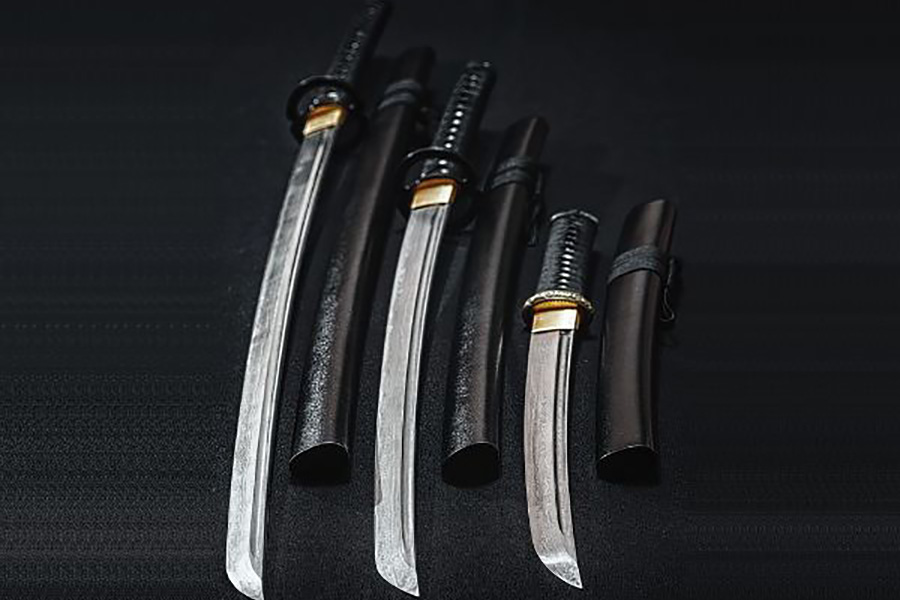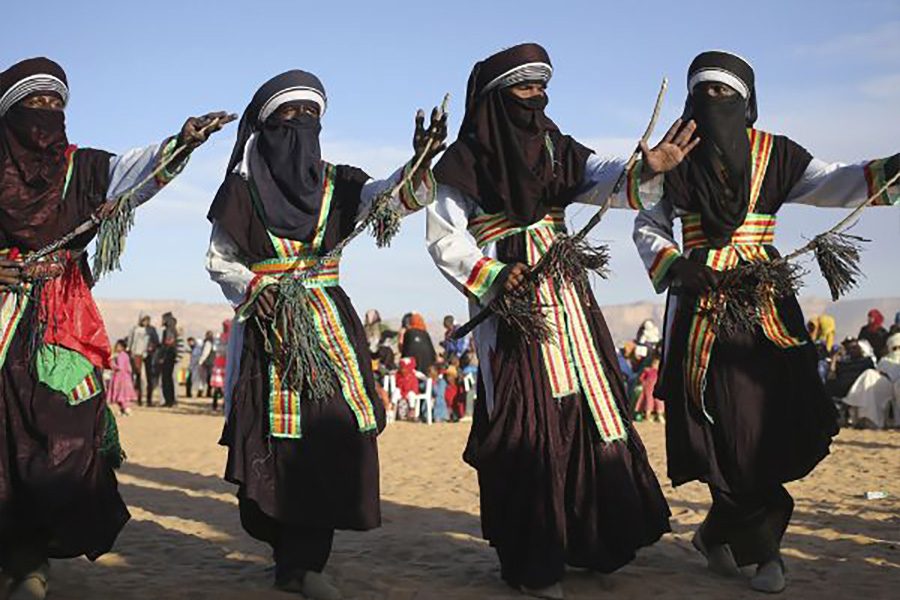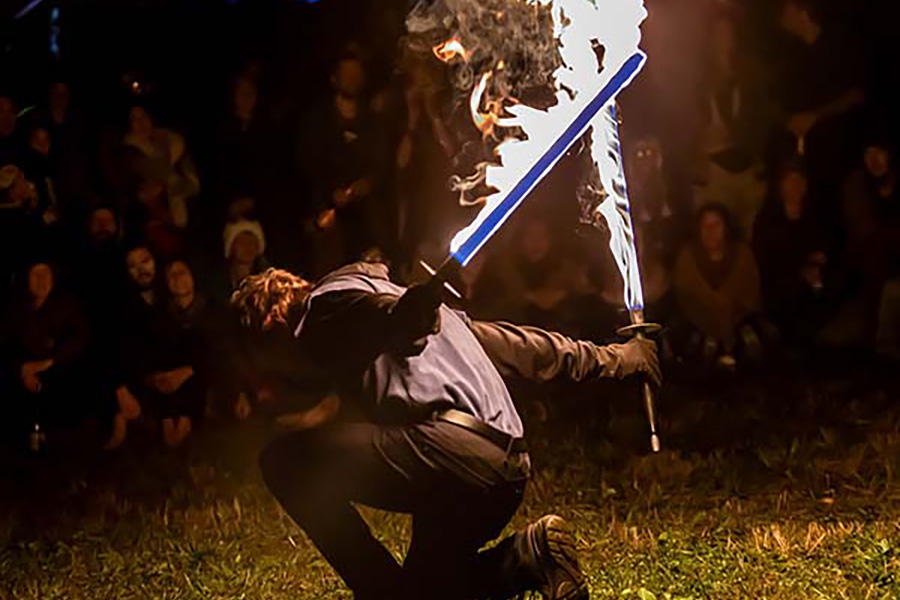The word lahab (𐤋𐤄𐤁) means “sword” meaning a weapon having various forms but consisting typically of a long, straight, or slightly curved blade.
The Paleo-Hebrew language or the original language of the Ābarayam is one spoken with an emphasis on the rauakh (breath, wind, spirit). With the language of the Ābarayam, each letter has a meaning and a number associated with it that adds meaning to each word they’re used with. Below you will be able to learn more about the letter in Ancient Hebrew, Yiddish Hebrew, Greek, and much more.
Letter Meanings
| Letter | Meaning |
|---|---|
| 𐤋 (l) – la | staff, goad, control, toward, protect, authority, bind, yoke, lead Prefix: to, for, of, into, according to, in the opinion of, before |
| 𐤄 (h) – ha | look, behold, the, reveal, breath, life, man |
| 𐤁 (b) – ba | House, family, “in” |
| Ābarayat Number | |
| Hebrew Gematria | |
| English Gematria | |
| Simple Gematria |
Based on the meaning of the letters the word could be defined as:
Definitions for 𐤋𐤄𐤁 / lahab
| Language | Word | Transliteration | Pronunciation | Definition |
|---|---|---|---|---|
| Ābarayat | 𐤋𐤄𐤁 | lahab | la-hab | flame, blade, bright, glittering, flashing. |
| English | sword | sword | sawrd | a weapon having various forms but consisting typically of a long, straight, or slightly curved blade, |
| Hebrew | לַהַב | lahab | lah’-hab | flame, blade |
| Arabic | شفرة | shifra | sh-if-ra | code, blade |
| Greek | ῥομφαία φλόξ | rhomphaia phlox | hrom-fah’-yah flox | Rompha, Rephan, the name of an Egyptian god. |
The 𐤋𐤄𐤁𐤉𐤌 (Lahabayam)
Lahabay or Lehabite are the descendants of 𐤌𐤑𐤓𐤉𐤌 (Matsarayam) 𐤁𐤍 (ban) 𐤇𐤌 (Kham). Their name is associated with 𐤋𐤄𐤁 (lahab) or flaming blade. They are only mentioned once in the scriptures as a people or tribe. They are the same as the 𐤓𐤁𐤅 (Rabau) or 𐤋𐤁𐤅 (Labau) of the 𐤌𐤑𐤓𐤉𐤌 (Matsarayam) inscriptions, and from them, 𐤋𐤅𐤁𐤉 (Lauabay) and the 𐤋𐤅𐤁𐤉𐤌 (Lauabayam) derived their name. They appear to have inhabited the northern part of Africa to the west of 𐤌𐤑𐤓𐤉𐤌 (Matsarayam), though latterly driven from the coast by the Greek (Yauan) colonists of the Cyrenaica.
Genealogy
Images for 𐤋𐤄𐤁 / lahab


Definitions for 𐤋𐤄𐤁𐤉 / lahabay
When adding the 𐤉 (yad) to the end of a word, it creates a possessive of the original word. It can either signify “my…” or identify a member of a nation. For example, 𐤏𐤁𐤓 (Ābar) is the progenitor, but 𐤏𐤁𐤓𐤉 (Ābaray) is the singular descendant of him also known as a Hebrew.
| Language | Word | Transliteration | Pronunciation | Definition |
|---|---|---|---|---|
| Ābarayat | 𐤋𐤄𐤁𐤉 | lahabay | la-ha-bay | |
| English | Lehabim | Lehabim | leh-aw-ben | descendants of Mizraim, son of Ham, son of Noah (Genesis 10:13). |
| Hebrew | לֶהָבִי | Lehabi | leh-haw-bee | |
| Arabic | ريش | rish | r-ee-sh | feathers, feathering, quilt, fledge. |
| Greek | Λεπίδες | lepides | le-pee-des |
Images for 𐤋𐤄𐤁𐤉 / lahabay


Definitions for 𐤋𐤄𐤁𐤉𐤌 / lahabayam
When adding the 𐤌 (mayam) after the 𐤉 (yad) to the end of a word, it creates a plural of the original word. It can identify multiple members of a nation. For example, 𐤏𐤁𐤓 (Ābar) is the progenitor, but 𐤏𐤁𐤓𐤉𐤌 (Ābarayam) are the plural descendants of him also known as Hebrews.
| Language | Word | Transliteration | Pronunciation | Definition |
|---|---|---|---|---|
| Ābarayat | 𐤋𐤄𐤁𐤉𐤌 | lahabayam | la-haba-yawm | |
| English | ||||
| Hebrew | ||||
| Arabic | ||||
| Greek |
Images for 𐤋𐤄𐤁𐤉𐤌 / lahabayam


Definitions for /
When adding the 𐤕 (tau) after the 𐤉 (yad) to the end of a word, it creates a plural of the original word. It identifies the language or a sign of a nation’s existence. For example, 𐤏𐤁𐤓 (Ābar) is the progenitor, but 𐤏𐤁𐤓𐤉𐤕 (Ābarayat) is the language of him also known as Paleo-Hebrew language.
| Language | Word | Transliteration | Pronunciation | Definition |
|---|---|---|---|---|
| Ābarayat | ||||
| English | ||||
| Hebrew | ||||
| Arabic | ||||
| Greek |
Images for /


Classification
You can continue your studies of the words by viewing Strong’s entries for:



